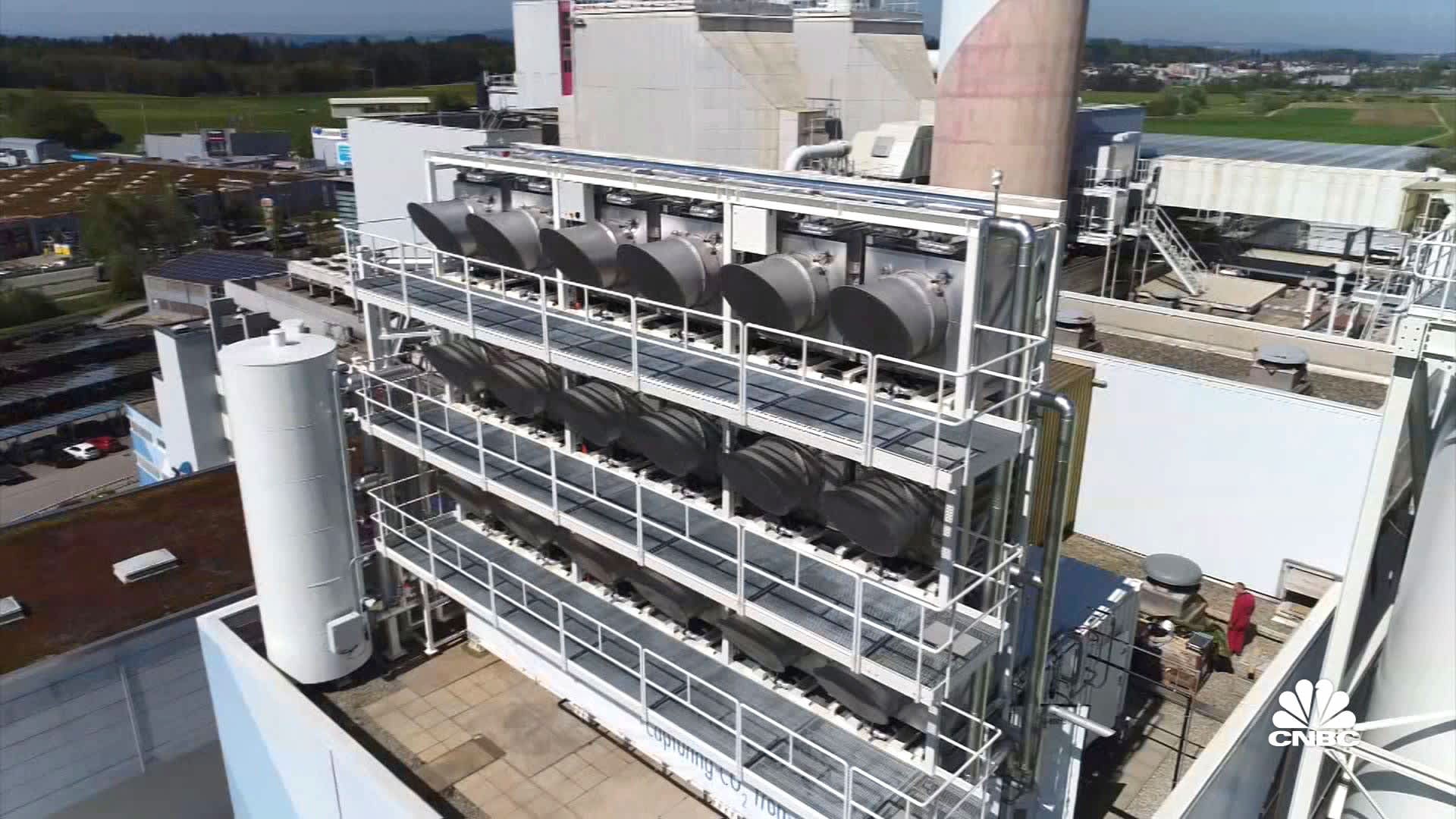The race to reduce carbon emissions is heating up, much like the planet itself is. But reducing emissions alone will not be enough to stop what’s happening.
It is not even enough to reach the goal of the Paris climate agreement, which is to limit global in this century to 1.5 degrees Celsius above preindustrial levels.
There is, however, a technology that’s being touted as a way to get us there faster — vacuuming carbon from the atmosphere — and major investors are now piling in.
Just outside Zurich, more than a dozen massive fans are fast at work, cleaning the air of carbon dioxide. So-called direct air capture is the leading edge of what could become the largest environmental industry aimed at saving the planet.
The company behind it, Climeworks, is one of the few offering the technology to basically vacuum the atmosphere of carbon. The plant in Switzerland removes about 900 tons of carbon dioxide per year, according to Climeworks policy chief Chris Beuttler. To put it in perspective, globally we are emitting 40 billion tons.
Beuttler calls the plant a “drop in the bucket,” but the bucket is getting bigger fast, as new companies like Climeworks, as well as governments, seek to monumentally expand what is called direct carbon capture.
“This has to reach several gigatons in terms of scale and not just technologies like direct air capture, but all carbon removal solutions combined. We need everything,” said Beuttler.
Canada-based Carbon Engineering has been working on direct air capture since 2015. Arizona State University and Silicon Kingdom Holdings are deploying proprietary carbon-capture technology that acts like a tree. “[It’s] thousands of times more efficient at removing CO2 from the air,” ASU’s website says. “The ‘mechanical trees’ allow the captured gas to be sequestered or sold for re-use.”
Climeworks’ system is a box with a huge fan on one end and a filter inside that attracts only carbon dioxide. The fan pulls the air through the filter, and once the filter is saturated, the box is closed. It is then heated to 100 degrees Celsius, and the pure carbon dioxide is released and collected. The captured carbon can either be buried deep underground or sold for other uses.
Climeworks installed the Zurich system in 2017, and by 2020 had raised $100 million from the likes of Microsoft, Audi, Shopify and Stripe. It is now building a much larger plant in Iceland.
“It has to become a trillion-dollar market. And I think those are the kinds of investors that see that there’s a long-term return on this,” said Beuttler.
He likens it to the fast rise of electric vehicles, solar panels and wind farms. Now the state of California is working on plans to use carbon capture to reach its aggressive goal of carbon neutrality.
“We have to try to proceed. There’s no choice. We have to sequester carbon at a high rate,” said Ken Alex, director of Project Climate at the Center for Law, Energy and Environment at the University of California, Berkeley.
Carbon-capture technology has been around for a while, he noted, but was considered too expensive.
“The price has already come down dramatically, and as it scales up, I think it’s not unrealistic to think that this is a viable opportunity,” he said.
Alex estimates that the world needs about 50,000 carbon-capture plants by 2050, which would cost about $10 trillion. It is unquestionably a colossal investment, but with ample potential returns — beyond of course saving the planet.
The captured carbon dioxide can be used to make fuel, plastics, even bubbles. Climeworks sells some of its captured carbon to Coca-Cola. Ironically, oil producers like Exxon and Chevron are investing heavily in carbon capture because the carbon can be used to release trapped oil underground.
“Those opportunities are part of the investment dynamic,” said Alex. “It’s a new industry and it’s just getting its feet wet, but I think the possibilities are quite substantial.”
Carbon removal also offers a new opportunity for the carbon credit market. Right now, companies can get credits for avoided emissions, or lower emissions, but in a net-zero world, they have to not just lower but remove carbon.
Now, they can buy those credits from removal companies like Climeworks. That’s why big names like Microsoft, which has said it wants to remove its emissions by 2030, are buying into this.
“In order to stick within the safe levels of global warming, we have to expand this,” Beuttler said. “This is not a question of can we? It’s a question of we have to.”
